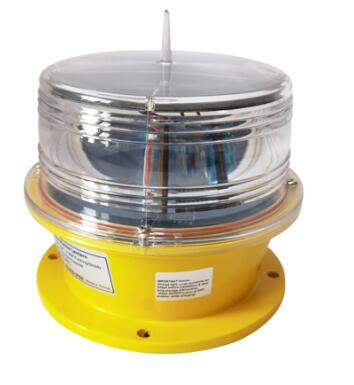Posted: 2025-06-16
When evaluating solar aviation light price considerations, smart buyers look beyond initial costs to examine long-term value propositions. These self-sufficient warning systems represent a significant technological advancement in aerial navigation safety, combining renewable energy with critical aviation infrastructure. This guide explores the key elements that determine system economics while maintaining strict compliance with international aviation standards.
Core Value Components
1. Technological Advancements
Modern solar aviation lights incorporate:
High-efficiency monocrystalline solar panels (22-24% conversion rates)
Lithium iron phosphate (LiFePO4) battery systems
Smart charge controllers with maximum power point tracking

Adaptive lighting controls based on ambient conditions
2. Certification Requirements
Systems meeting FAA/ICAO standards typically command premium valuation due to:
Rigorous testing protocols
| solar aviation light price |
Documentation requirements
Manufacturing quality controls
Third-party verification processes
3. Performance Specifications
Critical performance metrics affecting value include:
Luminous intensity (candelas)
| solar aviation light |
Beam divergence characteristics
Weather resistance ratings (IP68 minimum)
Operating temperature ranges (-40°C to +70°C)
Key Decision Factors
1. Total Cost of Ownership
Installation savings (no trenching or grid connections)
Energy cost elimination
Reduced maintenance requirements
Extended service life (10-15 year typical lifespan)
2. Operational Reliability
Battery autonomy (5-7 day standard)
Self-diagnostic capabilities
Remote monitoring options
Redundancy features
3. Compliance Assurance
Documentation packages
Testing certificates
Ongoing compliance support
Regulatory update services
Industry-Specific Applications
1. Offshore Wind Farms
Saltwater corrosion resistance
Hurricane-force wind ratings
Specialized mounting solutions
2. Remote Telecommunications
Extreme temperature operation
Vibration resistance
Long-duration backup power
3. Urban Infrastructure
Aesthetic design considerations
Light pollution mitigation
Integration with building systems
Emerging Technologies Impacting Value
1. Smart Systems Integration
IoT connectivity
Predictive maintenance
Automated reporting
2. Advanced Materials
Graphene-enhanced batteries
Self-cleaning surface treatments
Impact-resistant composites
3. Hybrid Power Solutions
Supplemental wind generation
Energy harvesting innovations
Backup power options
Selection Methodology
1. Needs Assessment
Structure height and location
Airspace classification
Lighting requirements
2. Vendor Evaluation
Certification history
Project references
Technical support capabilities
3. Lifecycle Analysis
Expected service duration
Replacement part availability
Technology roadmap alignment
Implementation Considerations
1. Site Preparation
Solar exposure analysis
Obstruction mapping
Foundation requirements
2. Installation Planning
Crew training needs
Special equipment requirements
Commissioning protocols
3. Ongoing Management
Monitoring system integration
Maintenance scheduling
Performance benchmarking
Future Market Trends
1. Standardization Efforts
International harmonization
Performance benchmarking
Testing methodologies
2. Sustainability Focus
Recyclable components
Reduced rare earth materials
Carbon footprint tracking
3. Digital Transformation
Blockchain documentation
AI-powered optimization
Digital twin applications
Understanding solar aviation light price dynamics requires comprehensive analysis of both tangible and intangible value components. The most cost-effective solutions balance initial investment with long-term operational benefits, compliance assurance, and future-proof technology. As the aviation industry continues to emphasize sustainability and smart infrastructure, solar-powered warning systems will likely see accelerated adoption across all sectors.
Buyers should focus on total system value rather than simple unit comparisons, considering all operational, regulatory, and lifecycle factors. The right solar aviation lighting solution represents not just a safety investment, but a strategic infrastructure decision that will deliver returns through decades of reliable service. With proper selection and implementation, these systems provide unmatched combination of safety, sustainability, and operational efficiency.